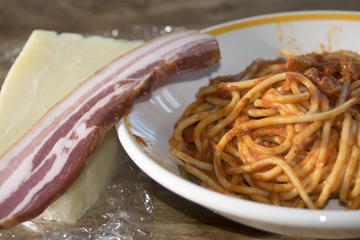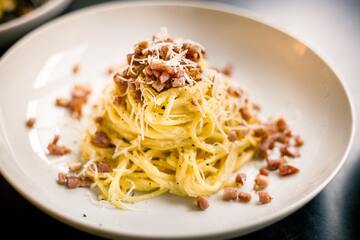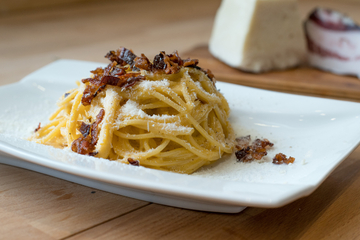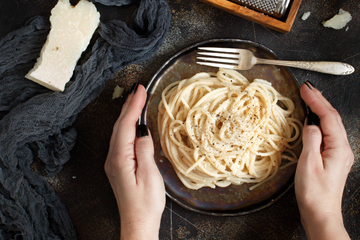How to make osso buco: Recipe
There are few dishes more overlooked and underappreciated than osso buco. This Italian classic is easy to make, delicious to taste, and heart-warming to experience. Here is our easy and traditional osso buco recipe!
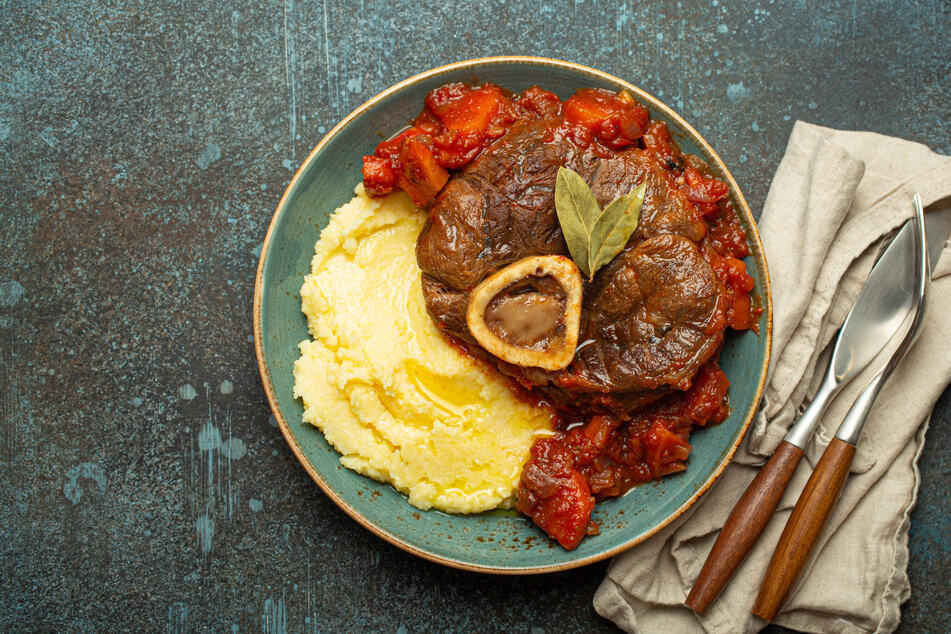
Osso buco refuses to fit into the pasta-pizza dichotomy that has become so synonymous with Italian food.
It is a beautiful stew with all the Italian flavors you'd expect from a trip up north, and a heartiness that'll fill your belly with joy, nutrition, and good old-fashioned Italian passion.
But how do you actually make osso buco?
In this osso buco recipe, we will channel the essence of Italian cooking – simple, easy, and sumptuous food that'll fill the belly and soul in equal measure.
How to make traditional Italian osso buco
There are few dishes more deceptively simple than osso buco, a meal that looks fancy but couldn't be more homey, packed full of flavor, and easy. Of course, the most important thing you need is a selection of high-quality ingredients, but you won't get anywhere without the right equipment.
Here's what you'll need to make osso buco:
- A large Dutch oven
- Spatula
- Wooden spoon
- Sharp knife
- Cutting board
- Medium-sized bowl
- Plate
- Measuring spoons and cups
- Tongs
Other than the Dutch oven, you only need very basic and standard kitchen equipment to cook osso buco. It's not an expensive dish, neither in the ingredients nor the tools.
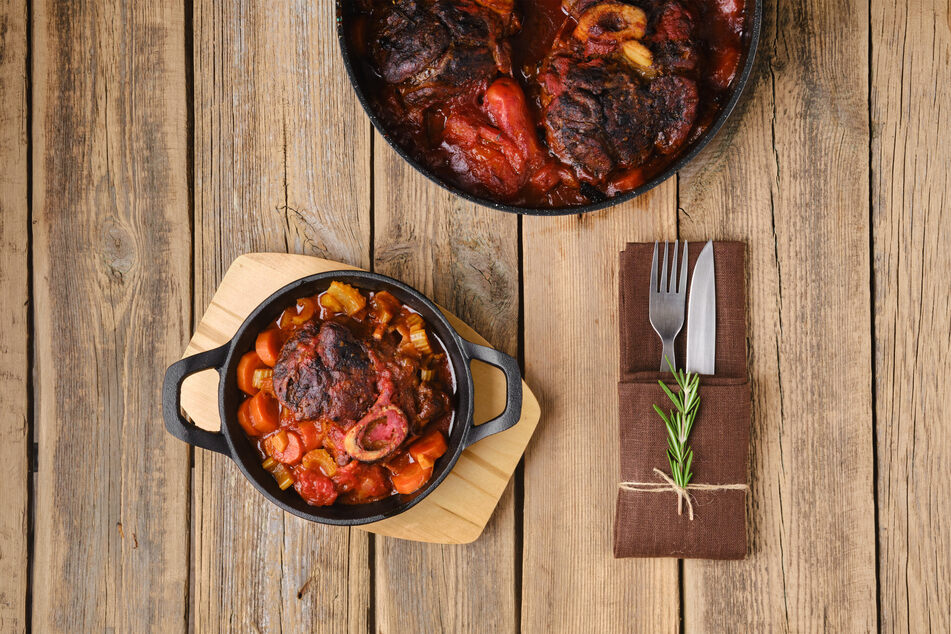
Osso buco recipe | Ingredients
In much the same way that similar Italian dishes like bolognese ragù or even something like an Irish beef stew require very simple ingredients, osso buco shouldn't cost an arm and a leg. Instead of using fancy ingredients, you want simple but high-quality ingredients that will lend the dish that extra leg-up it needs.
Here are the ingredients for osso buco:
- 4 veal shanks (or lamb shanks)
- 1 carrot
- 2 strips celery
- 1 onion
- White wine, 1 cup
- Tomato paste, 1 tablespoon
- Canned peeled tomatoes, 16 ounces
- Beef stock, 5 cups
- Flour, 1 cup
- Butter, 1 stick
- Olive oil
- Salt
- Pepper
On the proportions: We have designed this recipe to feed up to four people, with four beef shanks providing enough meat for a shank each. If you need to cook for more or less people, simply adjust all quantities proportionally.
Osso buco recipe | Instructions
While it will take you a while and require a bit of patience, osso buco is not a difficult dish to make. It is basically just a stew, with braised veal shanks and a simple soffritto base that has been cooked in a complex brew of stock, tomato, and wine. With a little bit of patience, you will have an endlessly delicious dinner to please the whole family.
How to make traditional and authentic Italian osso buco
Step 1: Let's start with your soffritto. Dice up your onion, celery, and carrot as small as possible so that they resemble a mince of tiny pieces. Setting the heat to medium on your stove top, add the veggies to your Dutch oven and a healthy amount of olive oil. Preheat your oven to 356°F.
Step 2: Slowly cook through the soffrito on a low-medium heat until it gets melty and the onions have gone totally translucent. Make sure to avoid giving any color or char to your vegetables as that will add a bitterness you don't want.
Step 3: In the meantime, add your flour to your bowl along with a couple pinches of salt and some cracked black pepper. Having removed the stringy layer of fat that surrounds the veal shank, season the outside with olive oil, salt, and pepper. Dredge them in the flour, making sure to cover every side and edge of each shank.
Step 4: Using a spatula, make room in the bottom of the Dutch oven for the veal shanks. Adding and melting the butter first, place your shanks at the bottom and begin the process of searing them.
Step 5: Once there is a reasonable sear on the outside of the veal (having been careful not to burn the soffritto in the meantime,) add the wine and turn the heat up.
Step 6: Having soaked the shanks in the wine for a few minutes, and allowed it to reduce by about a quarter, remove the shanks and place them on a separate plate. Continue to reduce the wine until it is about half-gone.
Step 7: Once the soffritto and white wine has a creamy and thick consistency, add your tomato paste and mix thoroughly, allowing it to dissolve into the stew and create a sweet, slightly sour fragrance.
Step 8: Now add your blended tomato, mixing thoroughly and seasoning the whole mixture with a bit of pepper and a pinch of salt as you allow the tomato to reduce, melt, and caramelize into the sauce.
Step 9: Put your veal shanks back into the stew, coating them in the tomato-soffrito sauce and making sure that everything is mixed in thoroughly. Season the shanks and then pour in your stock, making sure it mixes in as well.
Step 10: Having pre-heated your oven to 356°F, put the lid on your Dutch oven and put it in for about 1.5 hours. While the lid should stop the osso buco from reducing too much, check it every 30 minutes to make sure. If it is getting dry, add a bit of water.
Step 11: While waiting for your osso buco to cook, prepare your sides and accompaniments. We have included a few suggestions below.
Step 12: Take out your osso buco and serve each person a single veal shank, complete with a healthy dose of the delicious sauce you have created – then dig in, and enjoy!
As you can see, while there are many different steps, none of them are particularly complicated or difficult. Leave yourself a few hours, have a few glasses of red wine throughout the process, and have fun with it.
What if I don't want / can't find veal? If you use some big chunks of fully-grown beef, a lamb shank, or some beautiful chunks of pork, use exactly the same technique and steps we have laid out in the recipe above.
What is osso buco?

Osso buco is a typical north Italian braised stew, usually featuring veal or beef shanks. Typically utilizing a simple soffritto combined with wine, vegetables, and broth, it is a delicious and heartwarming meal that has become a symbolic part of Milanese and Lombardy cuisine.
Luckily, it's also remarkably easy to make!
There are two standard types of osso buco, one made with white wine, and another made predominantly with red wine and tomatoes (this recipe uses white wine and tomatoes).
It is typically served on a bed of either polenta or risotto alla Milanese, topped with a gremolata. Additionally, while in most cases it is made with veal, it can also be made with lamb, full-grown beef, or even pork.
The point of osso buco is that it is a delicious creation made from cheap and easy-to-find ingredients. Veal shanks are some of the cheapest and chewiest cuts around, but once braised, will fall apart in your mouth like heaven.
What does osso buco mean?
Osso buco is an Italian phrase that roughly translates to "bone hole" or, more figuratively, "bone with a hole." It references the fact that the shank around which the entire dish centers features a large bone in the center, filled with bone marrow. This is one of the most iconic parts of osso buco, as the marrow serves both to lend the dish a delicious flavor, and be edible in itself.

What to serve with osso buco
Osso buco being a remarkably wholesome and heartwarming recipe, its accompaniments should be equally warm and hearty. There are a number of typical accompaniments, which we will label as such, but plenty of other things as well that you can serve it with and have an equally fantastic experience.
Here's what you should serve with osso buco:
- Gremolata: Lemon juice, parsley, garlic, salt, pepper, olive oil.
- Risotto: Traditionally a saffron risotto, but a mushroom risotto will also do just fine.
- Polenta: A bed of polenta, seasoned beautifully, forming a mashed potato-like consistency that soaks up the juices.
- Mashed potato: Gorgeous mashed potatoes, packed full of buttery goodness, playing the same role as the aforementioned polenta.
- Wine: Preferably red, a Chianti, Montepulciano, Cabernet Sauvignon, or Sangiovese.
There's nothing better than a beautiful osso buco served on a risotto bed, with a gremolata perched on top. Pair it with a gorgeous red wine, and you'll have an absolute winner on your hands – enjoy!
Osso buco isn't as hard a recipe as you might have thought
From observing this recipe, you have probably already put two-and-two together: Osso buco is not hard to make. As with most Italian cooking, it's about the quality of the ingredients you use and basic cooking skills. Braising is about patience, not technicality, so give it time, and you'll end up with something incredibly delicious, hearty, and filling.
Of course, a good osso buco takes a good amount of time and, as a result, is something for a special occasion. Just don't forget to pair it with some delicious red wine, a quality arancini starter, and a quick 'n easy tiramisu to end the night with. Trust us, it'll be worth the effort!
Cover photo: IMAGO/Pond5 Images

